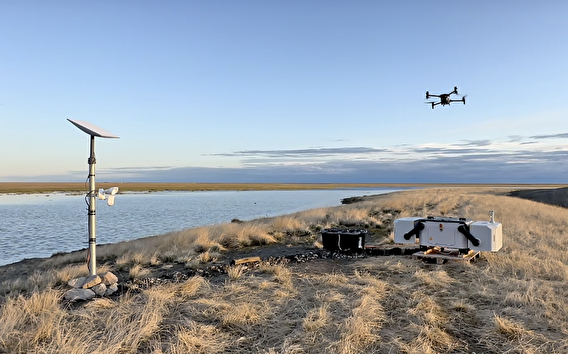The use of unmanned aerial systems (UAS) has exploded in recent years as state and local agencies continue to find new and innovative applications for this versatile technology. The Alaska Department of Transportation and Public Facilities (DOT&PF) recently expanded its UAS capabilities for critical infrastructure inspection with UAS docks and has approved UAS for a unique use case—avalanche monitoring and mitigation.

Alaska’s remote geography and frigid temperatures present several challenges for the DOT&PF. First, while UAS can help practitioners gain a bird’s-eye view of bridges and other critical infrastructure, the pilots must typically still be onsite, requiring them to sometimes travel long distances and face potentially dangerous conditions to deploy UAS where needed.
To overcome this challenge, the DOT&PF spent nearly a year documenting and testing UAS docks. These docks are systems that allow full support for beyond visual line of sight (BVLOS) missions for UAS. BVLOS missions, where a pilot does not need to physically see the UAS during flight, represent the next big opportunity for agencies to expand UAS operations and their benefits.
The UAS docks provide a secure remote landing place, allowing for rapid and continuous UAS deployments and significantly reducing personnel time on site. Once these systems are set up and a flight path is programmed on-site by a pilot, docks can keep the UAS and its battery warm to prevent icing, provide a platform from which to take off and land, recharge the unit, and upload its data to the web through a satellite internet connection.
Even with the benefits that UAS docks offer, the agency still needs a way to deploy them quickly to sites that are sometimes very far away. The DOT&PF is testing lightweight dock units that can be shipped on the small aircraft used to travel between locations in the state. The agency is currently preparing for a full winter trial of these docks with icing and snowfall to test durability.
Deploying docks also offers a potentially safer, reliable alternative to traditional methods of avalanche monitoring. Preprogrammed UAS missions can collect snow distribution data automatically without the need for human interaction, providing the data to avalanche specialists who are sometimes hundreds of miles away.
When it comes to actual avalanche mitigation, the DOT&PF gained Federal Aviation Administration approval to develop a dropping mechanism that will attach to the UAS and allow remotely controlled pinpoint explosive drops to trigger and redirect avalanches. This option will improve safety by reducing exposure of personnel to military artillery used in current methods.
(Adapted from FHWA Innovator, Nov./Dec. 2023.)
Learn more:
- Alaska expands reach of UAS in remote locations and extreme conditions (FHWA
Innovator, Nov./Dec. 2023)